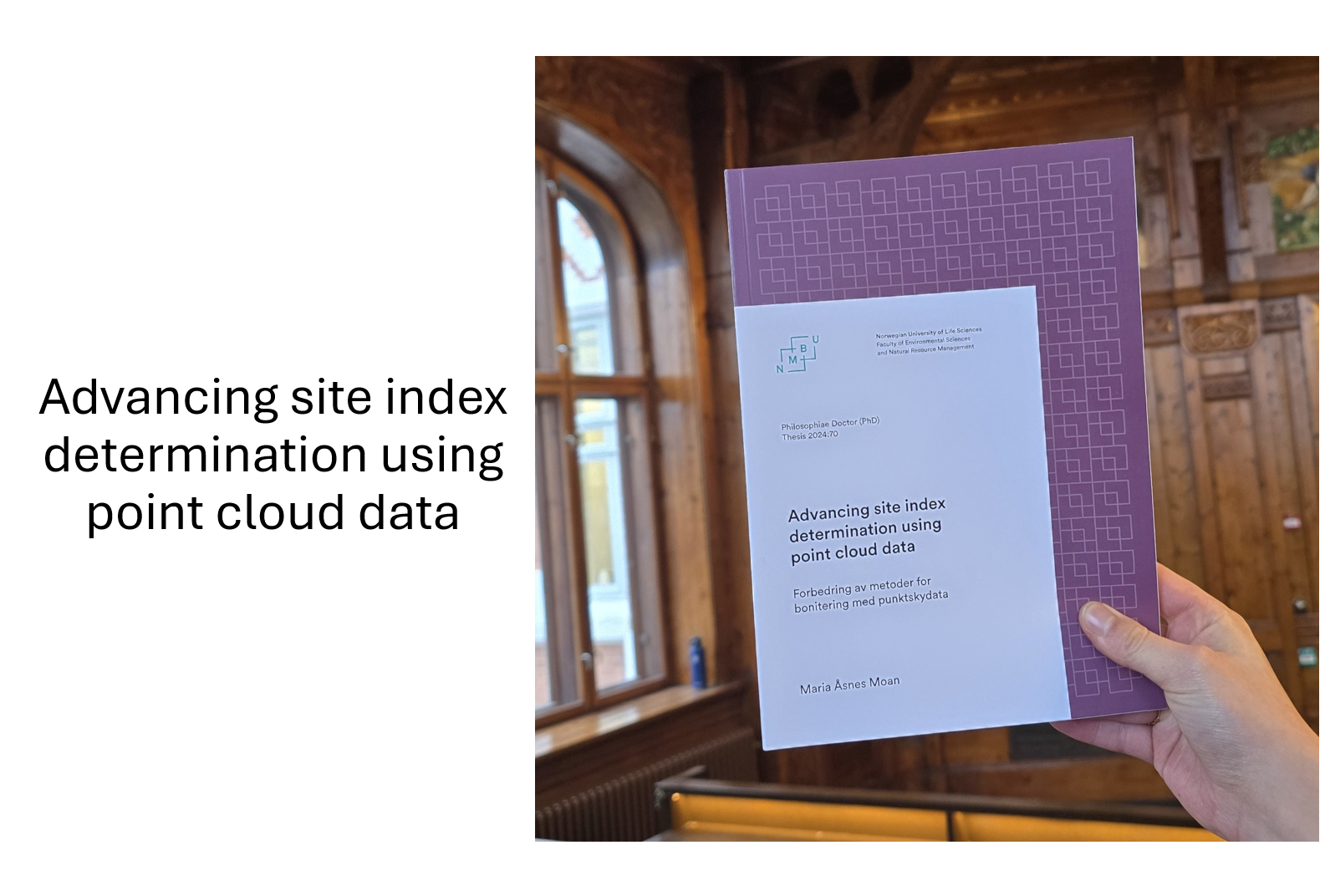We are happy to announce that our very first SmartForest PhD candidate Maria Åsnes Moan defended her PhD on
“Advancing site index determination using point cloud data”
Congratulations! 👩🎓
Site index (SI) is the top height at a given reference age and is used to describe the forest site’s potential to produce wood volume and its determination has evolved from purely field-based assessments based on age and height measurements to approaches using point cloud data.
This thesis aimed to advance SI determination using point cloud data by investigating some current challenges and opportunities.
🌲 Disturbances might make an area unsuitable for SI determination with point cloud data. The first study of this thesis classified suitability using variables from multitemporal ALS data. The results showed that suitability could be classified using multitemporal ALS data even though the definitions of suitability in that study were conservative as only one dominant tree being dead resulted in the plot being classified as unsuitable.
🌲 The second study used a time series of ALS data from three points in time to determine SI with the direct and height differential approach. The prediction errors were not statistically significantly different when using the full length of the time series of ALS data compared to using ALS data from two consecutive points in time. However, the area suitable for SI determination increased when any subset of consecutive points in time from the time series could be used for Sl determination due to increased flexibility to avoid using periods where disturbances had occurred.
🌲 The third study used stochastic programming to assess the value of improved information of the direct and height differential approach using either multitemporal ALS data or ALS and subsequent DAP data. The value of improved information was closest to zero and thus best for the height differential approach in this case study.
🌲 The fourth study detected the positions of branch whorls from very dense point cloud data using a deep learning model and used detected branch whorls to determine SI with the height differential approach. One of the challenges of SI determination in young forests is that the SI curves are steeper for younger ages than for older ages which means that the effect of branch whorl detection errors on the determined SI would be larger in young forests.
read the published articles from her thesis here:
🌲 Site index determination using a time series of airborne laser scanning data. https://lnkd.in/dWGRG8wj



